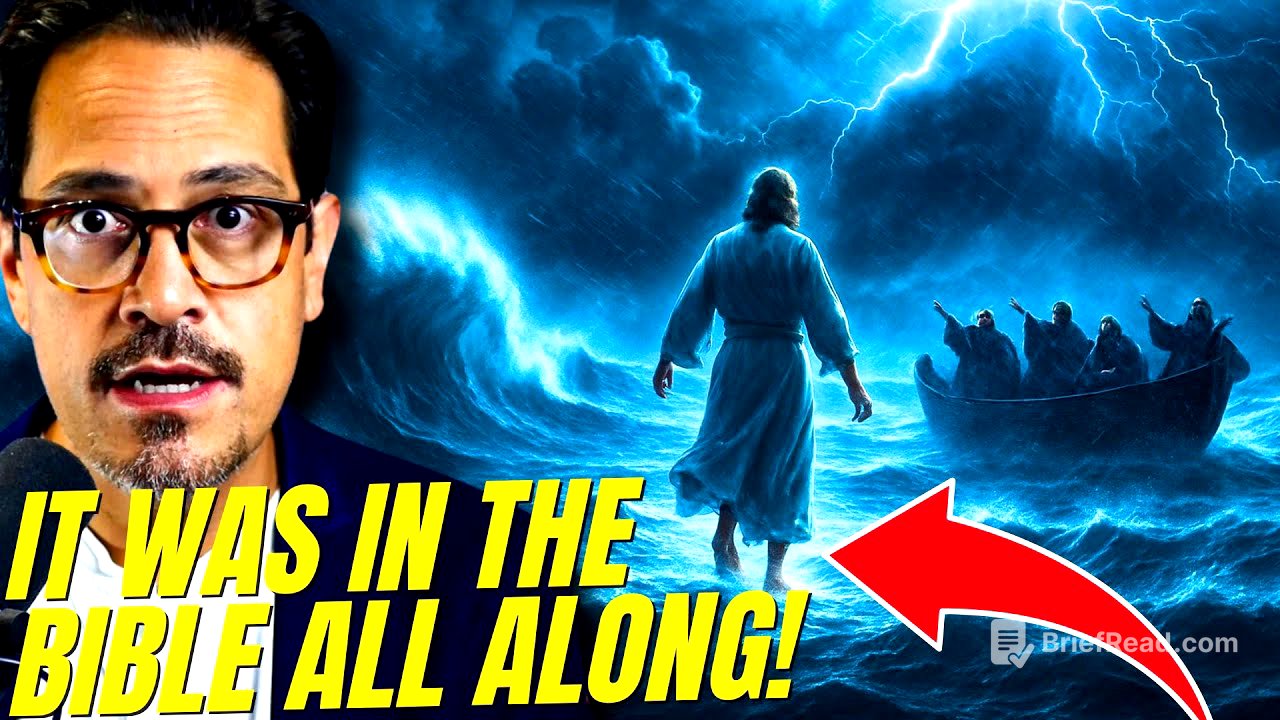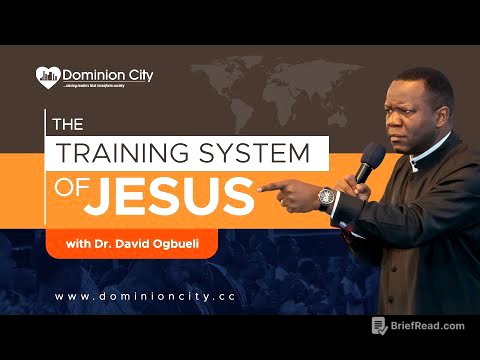TLDR;
This video explores Matthew 14:22-36, focusing on Jesus's actions after feeding the 5,000, including his walking on water, Peter's attempt to do the same, and the disciples' eventual recognition of Jesus as the Son of God. It highlights the connections between this passage and the Old Testament, particularly the Exodus story, and discusses the significance of Jesus's miracles and teachings for his disciples and for believers today. The main takeaway is the importance of trusting in Jesus and what he is doing in and through our lives, as he provides everything we need to accomplish what he calls us to do.
- Jesus's walking on water is linked to the Exodus story and God's control over the sea.
- Peter's attempt to walk on water demonstrates the importance of faith and trust in Jesus.
- The disciples' recognition of Jesus as the Son of God is a pivotal moment in their understanding of his identity.
- The healing of the sick who touched the fringe of Jesus's garment connects to the Messianic expectation of healing in Malachi 4:2.
- The lesson for the original audience and for believers today is to trust in Jesus and what he is doing in and through their lives.
Introduction [0:00]
The video introduces the passage in Matthew 14:22-36, where Jesus walks on water. It sets the stage by describing the disciples' fear upon seeing Jesus and hints at the deeper meaning behind this miracle, suggesting it fulfills scripture. The presenter encourages viewers to engage with the text and prepare for an in-depth study.
Summary of Matthew 14:22-36 [0:48]
After feeding the 5,000, Jesus instructs his disciples to cross the Sea of Galilee in a boat while he dismisses the crowds and goes to pray on a mountain. A storm arises, and the disciples struggle against the wind and waves. In the fourth watch of the night, Jesus approaches them, walking on the water. The disciples are terrified, mistaking him for a ghost, but Jesus reassures them. Peter asks to walk on the water to Jesus, and Jesus invites him. Peter initially walks on the water but becomes afraid of the wind and begins to sink. Jesus saves him, questioning his doubt. When they enter the boat, the wind ceases, and the disciples worship Jesus, declaring him the Son of God. Upon reaching Janzaret, the people recognize Jesus and bring the sick to him, who are healed by touching the fringe of his garment.
Jesus Sends Disciples Away and Dismisses the Crowd [2:10]
Jesus's urgency in sending the disciples away is explained by the parallel account in John 6, where the people, recognizing Jesus as the prophet prophesied by Moses after the feeding of the 5,000, were about to take him by force to make him king. Jesus withdraws to avoid this, dismissing the crowd and sending his disciples away so he can be alone.
The Storm and Jesus Walking on Water [3:44]
The storm is described as more than just a natural event; the Sea of Galilee was often seen by Jews as the abyss or gateway to the underworld, a place of watery chaos and evil spirits. The word "beaten" in Matthew 14:24, describing the boat's struggle against the waves, literally means "tormented," a term used to describe demonic hostility. Jesus approaches the disciples on the water, identifying himself with the words "I am" (egoi eimi), echoing Yahweh's self-identification to Moses in Exodus 3:14.
Peter's Request and Doubt [5:11]
Peter's request to walk on water is not a test of Jesus's identity but a desire to share in his ability. The correct translation of his request is "Since it is you, command me to come to you on the water." When Peter begins to sink, Jesus questions his doubt, which suggests a wavering faith, trying to move in two directions at once, similar to James's description of a double-minded man.
The Disciples' Confession and the Healing at Janzaret [6:27]
The disciples' declaration, "Truly, you are the Son of God," is the first time they use this full title for Jesus, but despite this confession, they still do not fully understand him, as indicated in Mark 6:52. The people at Janzaret seek to touch the fringe of Jesus's garment, mirroring the hemorrhaging woman's act in Matthew 9, expecting healing based on Malachi 4:2, which speaks of the Messiah bringing healing in his wings (tassels).
Connections to the Old Testament and the New Exodus Motif [8:03]
The feeding of the 5,000 connects Jesus to Moses, portraying him as the new Moses who provides for his people in the wilderness. This miracle, like the manna in the desert, signifies that Jesus's law will provide everything God's people need. Jesus walking on water is also linked to the Exodus story, where Moses exerted control over the sea by God's power. Jesus, as the new Moses, exerts the same control, leading his people into a new Exodus.
Jesus as God Who Controls the Water [11:39]
Jesus is not merely the new Moses but also the God who controls the water. Psalm 77 describes God's presence during the Exodus, with the waters trembling at his sight. Unlike Moses, who divided the water, Jesus walks on top of it, demonstrating his divine power. The Old Testament describes God as the one who walks on the sea, as seen in Job 9:8. The disciples, witnessing this, should recognize Jesus as both the new Moses and God himself.
Peter's Request: A Lesson for the Original Audience [15:31]
Peter's request to walk on water is not a test but a desire to be like his rabbi, reflecting the disciple's aspiration to emulate their teacher. Jesus expects his students to trust him and what he is doing in and through their lives. Even when faced with challenges, like Peter encountering the wind, disciples should trust that Jesus provides everything they need. The lesson is to trust in Jesus, who gives his disciples what they need to accomplish what he calls them to do, whether it's walking on water or facing death.









